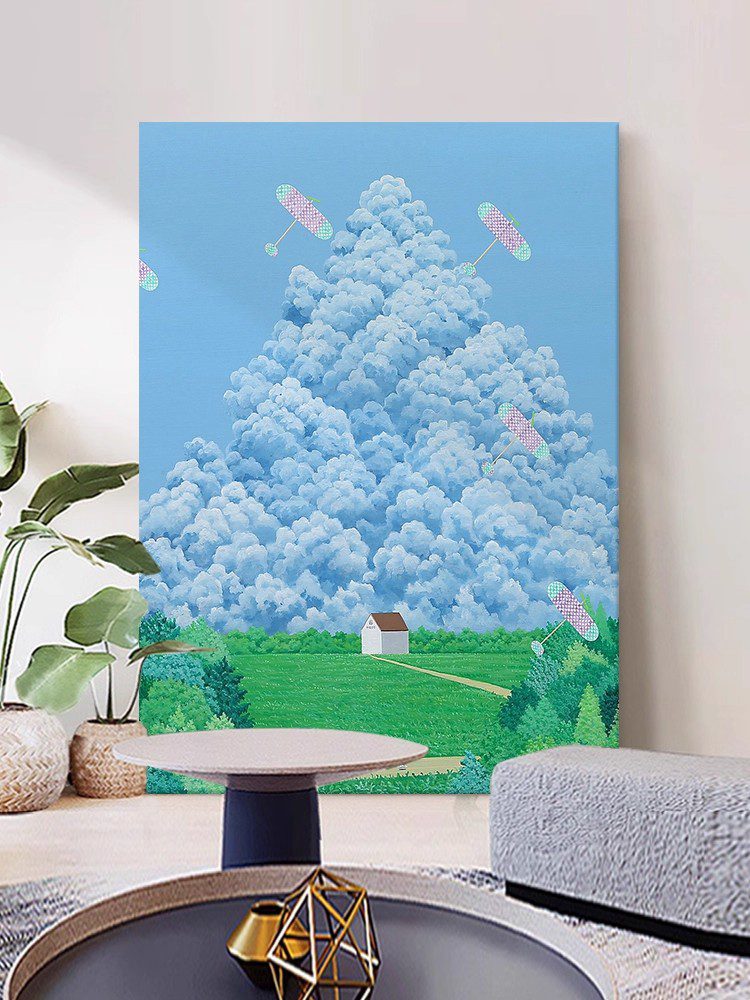Essential Tool List for Learning Hand-Painted Oil Art
Embarking on the journey of hand-painted oil art requires assembling a thoughtful selection of tools that cater to both foundational techniques and creative experimentation. Unlike digital mediums, oil painting involves physical materials that interact in unique ways, from pigments blending on a palette to layers drying over time. Below is a curated list of indispensable items for beginners, organized by function to ensure a balanced and efficient setup.
Core Painting Supplies
Oil paints form the heart of the medium, valued for their rich texture and ability to create depth through layering. Beginners should prioritize a basic set of primary colors—red, blue, and yellow—along with white and black to expand their mixing possibilities. These hues allow for the creation of secondary colors (green, orange, purple) and tints or shades by adjusting white or black ratios. Avoid purchasing overly complex palettes at first, as mastering color relationships with limited options builds a stronger understanding of hue, saturation, and value.
A palette is equally critical for organizing and blending pigments. Opt for a durable, non-porous surface like glass, plastic, or treated wood, which resists absorption and makes cleanup easier. Some artists prefer disposable palettes made of paper or foil for convenience, though reusable options are more sustainable long-term. Ensure the palette is large enough to accommodate multiple colors without crowding, leaving space for mixing areas.
Brushes and Application Tools
Brushes are the primary vehicles for transferring paint to canvas, and their shape and size influence mark-making significantly. Start with a variety of bristle types: stiff hog hair brushes excel at applying thick paint and creating texture, while softer synthetic or sable brushes are ideal for smooth blending and fine details. A basic set might include a large flat brush for broad strokes, a medium round brush for versatility, and a small detail brush for intricate work. Over time, expand your collection to include filbert brushes (rounded tips) for soft edges or fan brushes for special effects like foliage.
Palette knives offer an alternative to brushes, enabling bold, impasto strokes that add dimension to a painting. Use them to scrape paint, mix colors directly on the canvas, or create textured elements like rocks or clouds. Beginners often underestimate the versatility of palette knives, but incorporating them early can encourage experimentation with unconventional techniques.
Surfaces and Supports
The choice of surface affects how paint adheres and dries, with canvas being the most popular option due to its durability and flexibility. Stretched canvas provides a taut, even surface, while canvas panels (canvas glued to a rigid board) are more portable and less prone to warping. For practice, consider canvas pads or paper pre-coated with gesso, a primer that prepares surfaces for oil paint. Gesso creates a slightly absorbent layer that helps paint bond and prevents it from seeping into the material beneath.
Wooden panels are another excellent choice, offering a smooth, rigid surface that suits detailed work. They require less preparation than canvas but may be heavier to handle. Whichever surface you choose, ensure it is primed with gesso to create a consistent base. Unprimed surfaces can absorb too much oil, leading to dull colors or cracking over time.
Mediums and Solvents
Oil paints dry through oxidation, a process that can be slow and unpredictable without the aid of mediums. Linseed oil, derived from flax seeds, is a traditional medium that thins paint and extends drying time, allowing for smoother blending and glazing techniques. Use it sparingly to avoid overly runny mixtures, and opt for refined or cold-pressed varieties for better clarity.
Solvents like turpentine or odorless mineral spirits are essential for cleaning brushes and thinning paint during initial layers. They dissolve oil particles, making it easier to remove excess paint from tools and adjust consistency on the palette. Always work in a well-ventilated area when using solvents, as their fumes can be harmful in enclosed spaces. For a safer alternative, consider water-miscible oil paints, which clean up with soap and water but still offer the traditional properties of oil mediums.
Additional Accessories for Efficiency
A jar or container for holding solvents is indispensable for keeping brushes clean between strokes. Choose a wide-mouthed, leak-proof container to avoid spills, and line it with aluminum foil for easy disposal of paint residue. Some artists use two jars: one for dirty solvent and another for rinsing brushes before final cleaning.
A mahl stick, a long, lightweight rod with a padded end, helps steady the hand when painting fine details or edges. Rest the padded end on the canvas and hold the other end to create a stable support, reducing shaky lines. This tool is particularly useful for large-scale works or when working on a vertical surface like an easel.
Storage and Organization Solutions
Proper storage protects tools and materials from damage, ensuring they last longer and perform consistently. Keep brushes upright in a jar or lay them flat to maintain their shape, avoiding crushing bristles in tight spaces. Store paint tubes horizontally or with the cap facing downward to prevent air bubbles from forming, which can dry out the pigment near the opening.
A sturdy carrying case or toolbox is valuable for transporting supplies to classes or outdoor painting sessions. Look for compartments that separate brushes, palettes, and mediums to prevent mixing or breakage. Labeling containers for solvents, mediums, and cleaning supplies also saves time and reduces confusion during setup.
By assembling these tools thoughtfully, beginners can focus on developing their skills without the frustration of inadequate or mismatched materials. Each item serves a specific purpose, from preparing surfaces to refining details, and investing in quality basics early on lays the groundwork for a rewarding artistic practice.
